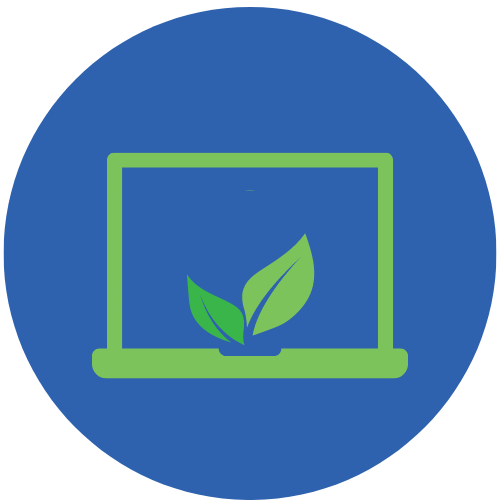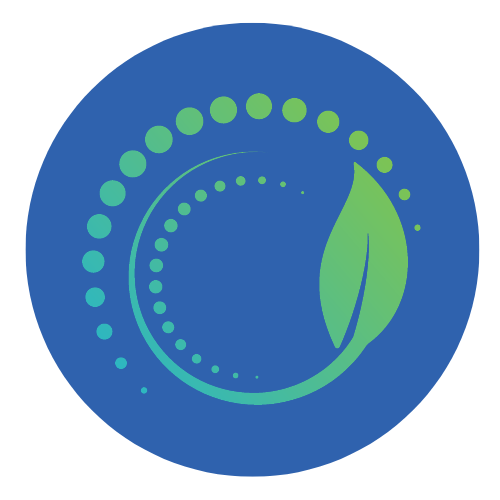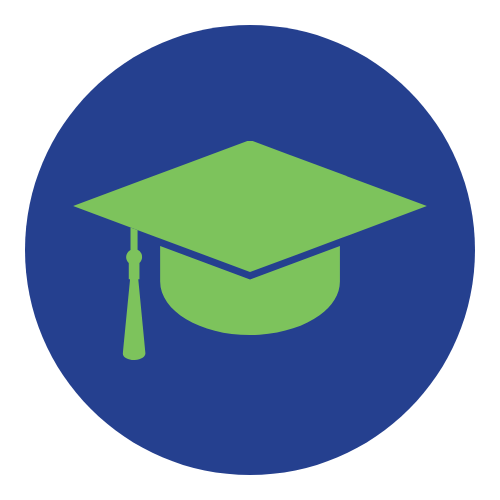.png)
FREE BONUS SESSION
What Did Hahnemann Mean by Characteristic?
P.S. It might not be what you think!
With Dr. Eric Udell
Dr. Udell decodes Hahnemann’s intended meaning of the well-known but misunderstood term characteristic, as famously described in Organon aphorism 153 by reviewing excerpts from Hahnemann’s writings, including reference to the original German terms. He will then describe a case that demonstrates this concept in practice.
This session is followed by a Q&A with Eric Udell, Jamie Oskin and Kim Elia.
COURSE OVERVIEW
ACHENA Approved 30 hours - 16 Category 1 & 14 Category 3
The Homœopathic Academy of Naturopathic Physicians (HANP) and WholeHealthNow are excited to announce a 30-hour Core Curriculum course in Homœopathy.
Meet our Instructors:
|
|
Whether you are a seasoned practitioner or a beginning student, this course will guide you through a series of informative lectures designed to create a solid foundation that will benefit any Homœopathic practice. Originally put together by the HANP as an accredited 30-hour Core Curriculum, each segment of this course was designed to synergistically create an essential foundation for successful practice.
You will find that the Core Curriculum includes some of the most accomplished Homœopaths practicing today. Each session is presented by a practitioner with a special expertise in that particular topic. Whether you are a Naturopathic Physician who wishes to fill the gaps in your Homœopathic knowledge (and obtain diplomate status with the HANP), or a student or practitioner of any level, these sessions will help you to build a solid base of knowledge that is essential to an understanding of the art and science of Homœopathy.
Please join us for a very special offering that is sure to propel your practice to a new level!
The 30 CE hours earned with this course may be applied to:
- North American Naturopathic Continuing Education Accreditation Council (NANCEAC)
- Accreditation Commission for Homœopathic Education in North America (ACHENA)
- DHANP renewal
Each session has been pre-recorded, and may be viewed at your convenience.
Who is the HANP?
The Homœopathic Academy of Naturopathic Physicians (HANP) is a specialty organization within the naturopathic medical profession. Its mission is to promote excellence in the practice of Homœopathy among naturopathic physicians. The HANP establishes and upholds specialist standards, provides education and mentorship, and is committed to protect and preserve Homœopathy as a core therapeutic modality within the naturopathic profession.
The HANP provides Board Certification in classical Homœopathy to naturopathic physicians. It is recommended that applicants complete this 30-hour Core Curriculum course, which covers the core competencies, prior to submitting an application with case submissions for HANP Board Certification.
Overview
Homœopathic Medicine – Pure & Applied 6 Part Series G. Dimitriadis, BSc, DHom(Syd), DHomMCCH(Eng), FHom(UK), GHIH(Syd)
12.0 hours general CE || OBNM and AANP || ACHENA approved Category 1
This course of 6 lectures provides an insight into George’s knowledge and experience gained over many years. Others who have studied with him have commented that the exposure to this material has provided them with a solid foundation which was previously lacking from their training, and as a result they have gone on to develop new found confidence and certainty toward practice, reflected by much improvement in their clinical results.
The longer you can look back, the farther you can look forward.” ~ Winston Churchill, (speech made 1944)
To be able to apply Homœopathy effectively in clinic, George Dimitriadis believes it is essential to first gain an understanding of its history and foundations. He did not reach this conclusion easily however; it was only after many years of trial and error in clinic and after closely examining the primary sources for himself.
After coming across Homœopathy in his early 20’s George immediately became fascinated by the concept of simila and drawn to learn more about this system of applying medicines, which to him appeared in theory to be both logical and scientific. The completion of a science degree (including anatomy, physiology and medical subjects) only reinforced his conviction in the scientificity of the homœopathic approach and increased his determination to further pursue its study. For the following ten years George read widely and travelled to India and Europe visiting homœopathic clinics, colleges and meeting personally with many teachers and ‘gurus,’ and over the same period, experimented with various approaches in his own clinic in Sydney. Around this time, it became evident to him that a good many of his cases were failing. It was then he realised that the reference tools he was using were flawed and the methods of applying them were less than scientific. So, he went back to the drawing board. George’s passion for detail and accuracy led him to undertake an in-depth study of the Homœopathy of Hahnemann, beginning with his writings prior to the development of Homœopathy, through to his later works. As a result of this careful chronological examination of the primary sources George has gained a far deeper understanding of true Homœopathy with a consequent desire to pass this knowledge on to others.
From 1995 George began to focus on the work of Bönninghausen and in particular his legacy, Therapeutisches Taschenbuch (TT) (Therapeutic Pocketbook Repertory). The years 1995-2000 saw him undertake the English re-publication project of this valuable work, which involved correcting and re-editing through reference to the original German sources, resulting in 2000 in the publication of The Bönninghausen Repertory (TBR), followed by the second edition TBR2 (2010) which is widely recognised as the most reliable repertory available today, and has been, for many years largely the only repertory George himself uses in clinic.
Among the topics covered in the course are the following:
- History and development of Homœopathic Medicine
- Development of the Pure Materia Medica of Hahnemann
- History and development of Repertory – with particular focus on the Therapeutisches Taschenbuch (TT) of Bönninghausen.
- The use of TT with a variety of case exercises from George’s clinic, through the modern English language translation The Bönninghausen Repertory, (TBR2)
- Hahnemann’s Theory of Chronic Disease. An understanding as to what he really meant by it and how to apply it clinically.
- Each lecture provides plentiful and clear citations to the sources in order to facilitate further investigation and studies beyond the lecture series.
*If you have already taken this course through WHN, please write to us. We have a special offer for you.
50 Millesimal Potencies and the Medicinal Solution Gregory Pais, ND, DHANP
1.5 hours general CE || OBNM and AANP || ACHENA Approved Category 3
This presentation, 50 Millesimal Potencies and The Medicinal Solution, provides information on the history and development of 50 Millesimal potencies (and the medicinal solution) in their use in clinical practice. As this information is seldom presented from the primary source, the 6th edition of the Organon will be utilized and Dr. Pais will demonstrate their efficacy through case examples from practice.
Participants will gain an understanding of when to use 50 Millesimal potencies and their application in serious physical pathology. Participants will learn how to properly use the medicinal solution to best manage these cases. Three case presentations demonstrating the concepts contained in this CE session are discussed in depth.
Basic Outline:
- The Organon of Medicine editions
- 50 Millesimal Potencies (6th ed., Aph. 246-248)
- 50 Millesimal Pharmacy (6th ed., Aph. 270, and footnotes)
- Cases, including the following topics:
- Aggravations (6th ed., Aph. 161, 248, 275, 282)
- The Medicinal Solution (6th ed., Aph. 247, 248 footnote)
- The Test Dose (6th ed., Aph. 278)
- 50 Millesimal vs. Centesimal Potencies
- Q Potency Myths
- Repetition of Dose (6th ed., Aph. 246 footnote, 248)
Individualization – Case Analysis Stephen Messer, ND, MSEd, DHANP
1.5 hours general CE || NANCEAC || ACHENA Approved Category 3
This presentation discusses the importance of individualized homœopathic prescriptions for better case outcomes. It includes how to identify the different types of characteristic symptoms needed to accurately choose an appropriate homœopathic remedy.
The information presented in this continuing education course is intended for use by licensed medical professionals. Nothing contained in this presentation should be considered treatment advice or guidance to be used at home without the supervision of a properly trained professional. By continuing to participate in this course, you acknowledge that this information is for educational purposes and does not constitute treatment recommendations.
Posology Stephen Messer, ND, MSEd, DHANP
2 hours general CE || NANCEAC || ACHENA Approved Category 3
This course will take a detailed look at homœopathic posology. Different schools of thought will be discussed in terms of homœopathic potency, frequency, repetition as well as how to choose the best dilution and frequency of dosing. Case management of follow-ups is also discussed.
The information presented in this continuing education course is intended for use by licensed medical professionals. Nothing contained in this presentation should be considered treatment advice or guidance to be used at home without the supervision of a properly trained professional. By continuing to participate in this course, you acknowledge that this information is for educational purposes and does not constitute treatment recommendations.
Vital Force ~ Stephen Messer, ND, MSEd, DHANP
1.5 hours general CE || NANCEAC || ACHENA Approved Category 3
This presentation discusses the concept of the vital force within homœopathic philosophy and how it relates to vitalism and allopathic conventional models. Additionally it reviews the types of conditions that are treatable with Homœopathy and proposed mechanisms of action of homœopathic medicines as ‘information medicine’ on the vital force.
The information presented in this continuing education course is intended for use by licensed medical professionals. Nothing contained in this presentation should be considered treatment advice or guidance to be used at home without the supervision of a properly trained professional. By continuing to participate in this course, you acknowledge that this information is for educational purposes and does not constitute treatment recommendations.
A Regulatory and Manufacturing Roadmap for Homœopathic Drug Products - Eric L. Foxman, RPH
2.0 hours Pharm (RX) CE || NANCEAC || ACHENA Approved Category 1
This presentation will cover the regulations affecting homœopathic drugs and will examine the role of the Homœopathic Pharmacopeia and the information in this on-line reference. The different manufacturing methods for making homœopathic drug products will be addressed so attendees have an understanding and can make better decisions on what to utilize for patient care. The presentation will include issues to consider for evaluating vendors and supplies for attendees’ practice formularies.
Session One
- Overview of regulations affecting homœopathic drugs.
- Differences between homœopathic products and other CAM products and how these differences affect the attendees’ practice.
- The Homœopathic Pharmacopeia: its role and information.
Session Two
- Manufacturing methods for making homœopathic drug products; impact on labeling information.
- Vendor evaluation and considerations; impact of vendors on attendees practice and formulary.
- Addressing (pre-submitted) questions of interest/concern to attendees.
The Materia Medica of Hahnemann: An Introduction to the Primary Sources of Our Homœopathic Literature with Dr. Jamie Oskin, ND, DHNAP
1.0 hours General CE || OBNM || ACHENA Approved Category 1
This talk will be an introduction to Hahnemann’s materia medicæ. The objective is for attendees to walk away less intimidated by the Materia Medica Pura and The Chronic Diseases, more familiar with how these works were constructed and, therefore, better equipped to utilize them to maximal advantage in practice. We will examine the structure of these works, how to utilize the introductions, author citations, time stamps, symptom grading, and footnotes.
Basic Outline
- Components and structure of Hahnemann’s materia medicæ
- Remedy introductions
- Numbering symptoms and citations
- Master provers
- Proving doses
- Order and organization of symptoms
- Time stamps of primary and secondary symptoms
- Footnotes
Homœopathic Research - Jamie Oskin, ND, DHNAP
2 hours General CE || OBNM || ACHENA Approved Category 3
This presentation provides an overview of the current state of homœopathic research at the time of presentation. It will begin with an accurate definition of Homœopathy and a description of drug pharmacodynamics and drug tolerance as a primer for discussing various types of homœopathic research and their purpose. The presentation will explore outcomes studies, placebo controlled studies, meta analyses, cell culture, plant and animal research, and clinical trials.
The speaker will propose that homœopathy is not merely placebo and offer evidence from the peer-reviewed literature to support that argument. There will then be a discussion of the latest research exploring the most controversial topic in homœopathy, ultra-dilutions, including the discovery of nanostructures that reach non-zero asymptotes in homœopathically manufactured medicines at high dilutions past Avogadro’s number. We will then turn the presentation towards topics of real world research including comparative effectiveness studies of homœopathy and conventional medicine as well as examples of integrative medicine research. By the end of the presentation, the student should be acquainted with the current state and breadth of homœopathic research.
Basic Outline
- Homœopathy Defined
- Drug Pharmacodynamics
- Primary & Secondary (Re)Actions
- Tolerance
- Basic Premises of Homœopathy
- Purposes & Types of Homœopathic Research
- Outcomes Study Examples
- Placebo Controlled Trials
- Cell Culture, Plant, and Animal Studies
- Clinical Trials
- Ultra-Dilutions
- Nanoparticle/Nanostructure Research
- How does it work? (Mechanism)
- The reproducibility of biologic effects of homœopathic medicines
- Homœopathy in the real world
- Comparative Effectiveness Research Examples
- Integrative Medicine Research Examples
Systemic Adaptive Biological Healing - Iris Bell, MD, PhD
1.0 hours General CE || OBNM || ACHENA Approved Category 1
This presentation provides an overall model for homœopathic healing that involves the interaction of the remedy as a complex system that emits self-similar signals (electromagnetic, optical) into its surrounding environment for the recipient organism as a complex adaptive system.
Nanostructures are smaller than 100 nanometers in diameter. The smallest nanostructures are less than 10 nanometers in diameter and acquire quantum mechanical properties as a function of large surface area in a small particle, thereby trapping atoms and their electrons close to the surface. Quantum confinement, entanglement, and coherence may result. The model postulates that homœopathic manufacturing generates complex nanostructures that may include the source as a core nanoparticle and/or a coating shell for other core nanomaterials.
These nanomaterials may include silica and silicon dots from container glassware or carbon dots from plastic polymer containers, residual lactose from trituration of insoluble source materials, and any ethanol solvent during succussions; and plant or animal remedy sources (if used) and/or cork (quercus) stoppers (if used, as in traditional Hahnemannian manufacturing). In turn, the remedy nanostructures can structure surrounding water into self-similar nanostructures in vitro and in vivo and emit detectable electromagnetic and optical signals. The signals in turn trigger emergent adaptive (hormetic) responses in the body, which treats them as an individually salient danger or damage signal for the endogenous sensory and cell defense response pathways.
The biology of the living system occurs at the nanoscale level or organization with additional endogenous signaling pathways that amplify the original signal. The overall healing proceeds across the body’s inherent complex adaptive network organization from above down, inside out, in reverse order in time of symptom appearance. (cf., Hering’s Law of Cure). The speaker supports her argument with research evidence from the peer-reviewed literature.
Basic Outline
- Overview of the model for homœopathic healing
- Definitions and properties of complex adaptive systems
- Specific types of biological effects of remedies
- Role of homœopathic manufacturing methods and materials in generating nanostructures
- Evidence for electromagnetic and optical signal emissions from remedies
- Interaction of remedy nanostructures and signals with living systems – endogenous amplification mechanisms
- Self-organization and emergence in the recipient organism as a complex adaptive system or network to generate resilience
- Conclusions
Epidemic Disease and Genus Epidemicus -Andre Saine, ND, DHANP
1.0 hours General CE || OBNM || ACHENA Approved Category 3
Throughout history epidemic diseases such as the measles have appeared in our culture. In these acute diseases, the use of Homœopathy has proved to be a very valuable medicine. Learn how to identify the Genus Epidemicus as well as prescribe and manage the homœopathic prescription.
Learning Objectives:
- Define acute disease
- Define sporadic disease
- Define epidemic disease
- Guidelines of how to prescribe a remedy in an epidemic disease
References
- Organon §72-73, 100-103
Defective Cases - Andre Saine, ND, DHANP
2.0 hours General CE || OBNM || ACHENA Approved Category 3
At times in prescribing a homœopathic remedy we find ourselves in a less than optimal situation yet still have to prescribe the best indicated remedy. In this case you are often dealing with a defective or dissimilar case. In this two-hour CE session, learn how to navigate this challenging situation and gain an understanding to help you successfully prescribe the remedy.
Learning Objectives:
- Define and Identify a defective case
- Understand a dissimilar disease state
- Clinical application of how to prescribe within the context of defective diseases.
References:
- Organon §162-171, 180
Dynamic vs. Non-Dynamic Disease - Andre Saine, ND, DHANP
1.0 hours General CE || OBNM || ACHENA Approved Category 3
Non-dynamic disease, also known as disease of lifestyle, is often excluded in homœopathic care. However, this sort of disease must be corrected by correcting the lifestyle. In contrast dynamic disease occurs despite a healthy lifestyle. in this case the correct homœopathic remedy will likely reverse the disease state. Learn how to distinguish the two and how they complement each other in our day-to-day practice.
Learning Objectives:
- Understand Dynamic Disease
- Understand Non-dynamic disease
- Learn how to distinguish the two types of disease and how to apply both together in clinical practice.
References:
- Organon §7a, 77, 186
Fixed vs Variable Acute Diseases - Nazanin Vassighi ND, DHANP
.5 hours General CE || NANCEAC || ACHENA Approved Category 3
Learn how to differentiate whether an acute illness is fixed or variable.
References:
Organon §72-73
Susceptibility - Betsy Rice ND
.5 hours General CE || NANCEAC || ACHENA Approved Category 3
References:
Organon §31
Single Medicine - Betsy Rice ND
.5 hours General CE || NANCEAC || ACHENA Approved Category 3
It is important to give a single medicine at one time so there is no doubt as to what is helping the patient. There are other reasons to give a single medicine at one time and those details will be laid out in this session.
Learning Objectives:
The candidate will demonstrate the ability (competence) to successfully manage a case with a single medicine via case based test questions.
References:
Organon §273
HANP Recommended Curriculum
The HANP endorses genuine, orthodox Homœopathy that is practiced in strict accordance with the method described by Hahnemann in the Organon of Medicine, Chronic Diseases, and Lesser Writings and is void of all speculative reasoning (Organon, §6). Homœopathy proper differs from modern techniques, which includes prescribing mixtures of more than one medication at a time (polypharmacy) and/or utilize speculative theories, such as the doctrine of signatures (as well as other a priori speculations about substance effects based upon smell, taste, appearance, chemical analysis, or the faculty of imagination) in order to select a medicinal substance (Organon, §110).
The information presented in this continuing education course is intended for use by licensed medical professionals. Nothing contained in this presentation should be considered treatment advice or guidance to be used at home without the supervision of a properly trained professional. By continuing to participate in this course, you acknowledge that this information is for educational purposes and does not constitute treatment recommendations.
Watch the FREE Bonus Session!
Dr. Udell decodes Hahnemann’s intended meaning of the well-known but misunderstood term characteristic, as famously described in Organon aphorism 153 by reviewing excerpts from Hahnemann’s writings, including reference to the original German terms. He then describes a case that demonstrates this concept in practice. This session is followed by a Q&A with Eric Udell, Jamie Oskin and Kim Elia.
ABOUT Andre Saine
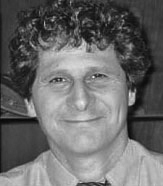
Dr. Saine is a 1982 graduate of the National College of Naturopathic Medicine in Portland, Oregon. He is board-certified in homeopathy (1988) by the Homeopathic Academy of Naturopathic Physicians. He has been teaching and lecturing on Homeopathy since 1985. One of the main points of his clinical work is the treatment of patients suffering from very serious chronic diseases. In addition to his private practice in Montreal, Canada, he has been the Dean and main instructor for the postgraduate program of the Canadian Academy of Homeopathy since 1986.
ABOUT Gregory Pais
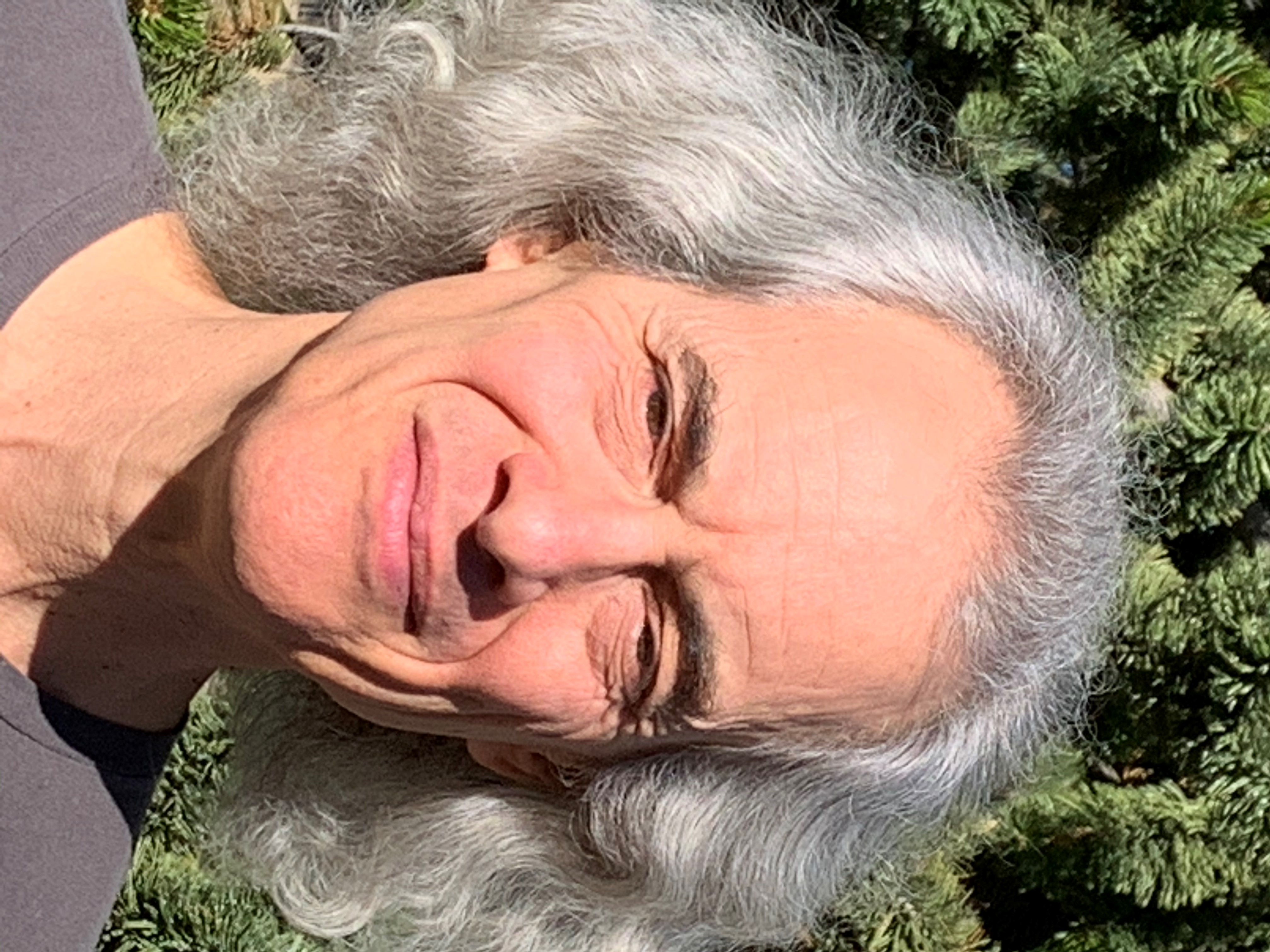
Dr. Gregory Pais is a registered naturopathic doctor in the state of Colorado, board certified in homoeopathy by the HANP, and has been employing Hahnemann’s Advanced Methods in his practice for 26 years.
Utilizing the advanced methods of Hahnemann’s practice from the 6th edition of the Organon has enabled Dr. Pais to help many hypersensitive patients with severe chronic diseases such as Multiple Sclerosis, Crohn’s Disease, Ulcerative Colitis, Asthma, and Multiple Chemical Sensitivity. He takes particular pleasure in helping these patients when other homoeopathic methods previously failed them. “To see someone suffering so much, refusing homoeopathic care due to previous bad experience, then healing with Hahnemann’s approach, is incredibly rewarding. I love returning them to homoeopathic care.”
ABOUT Iris Bell
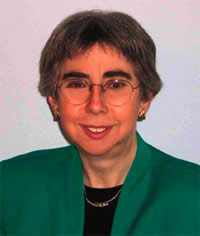
Dr. Bell has published professional papers and book chapters on her clinical research, a monograph on environmental illness, and books for patients with anxiety disorders and chronic illness.
Her passion is to help those with chronic illness begin the journey to better health.
ABOUT George Dimitriadis
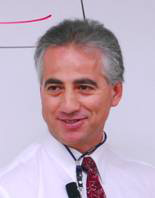
George Dimitriadis is known worldwide for his exceptional scholarship and precision in his homœopathic research and writing. With this series on Homœopathic Diagnosis, we have an unprecedented opportunity to study with a contemporary homœopathic virtuoso.
ABOUT Jamie Oskin
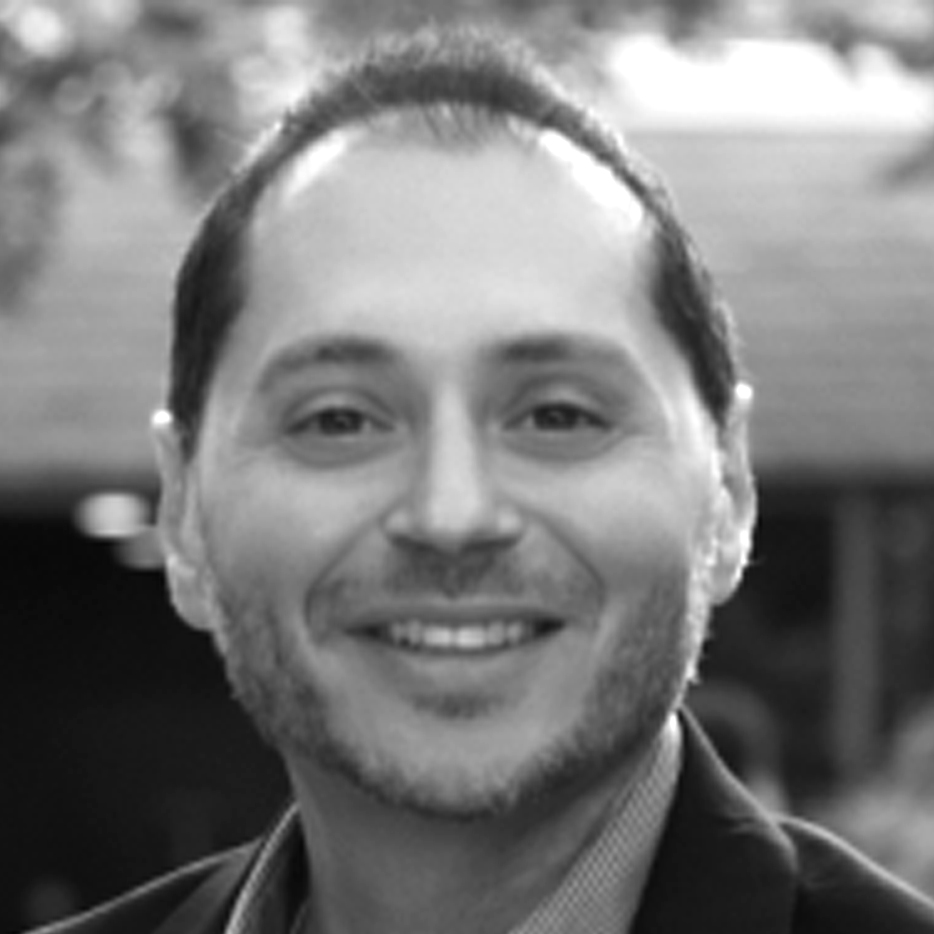
Dr. Jamie Oskin is a highly trained naturopathic physician with expertise in homœopathy and education. Dr. Oskin is an international speaker on the homœopathic treatment of ADHD and Autism, and his work has been published in Homœopathy Today, the American Journal of Homœopathic Medicine, Naturopathic Doctor News and Review, and Chiropractic Economics. Additionally, Dr. Oskin plays an active role in education as a guest lecturer and former adjunct faculty member in the homœopathy department at the Sonoran University of Health Sciences, formerly Southwest College of Naturopathic Medicine (SCNM) in Tempe, Arizona. He has also been an educator for WholeHealthNow.
ABOUT Eric Foxman
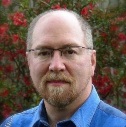
Many in the industry know Eric as a long-time member or company representative of the American Association of Homeopathic Pharmacists. In his 10th year of the third term on the Board of Directors, he has worked on Continuing Education modules for pharmacists, education presentations for health care practitioners and consumers and position statements of the Association. A presenter or host of numerous AAHP Compliance Thru Education webinars addressing legal, regulatory and technical aspects of the manufacture and marketing of homeopathic drug products include eight annual webinars covering updates to the HPUS, plus many others on facets of regulations that impact the manufacture and use of homeopathic drug products.
ABOUT Nazanin Vassighi
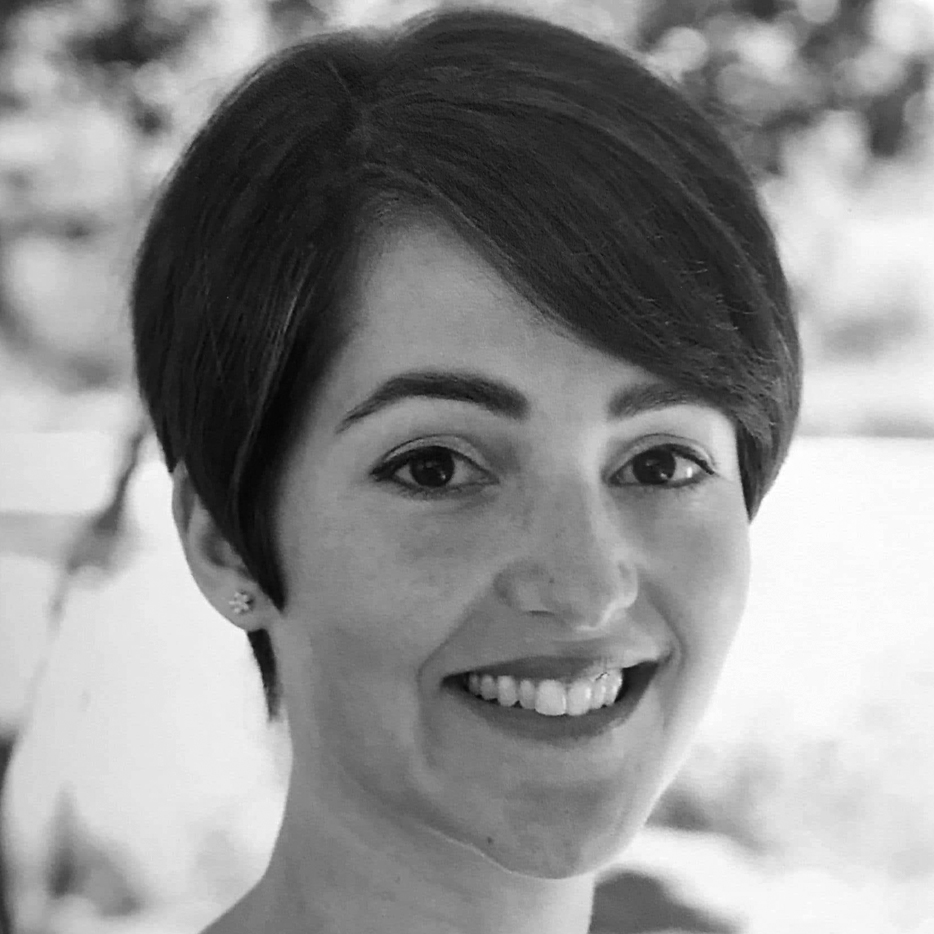
Dr. Vassighi is a Naturopathic Doctor and Assistant Professor of Homœopathy at Bastyr University, California (BUC). She graduated with a Doctorate in Naturopathic Medicine with Honors from Southwest College of Naturopathic Medicine (SCNM) in Tempe, AZ. She continued her post-graduate education at SCNM by completing a first-year general medicine residency. With a love for homeopathy and the profound, life-changing effects it has on her patients. She is one of a few naturopathic doctors in the nation who has received the privilege of completing this residency, making her part of an elite group of highly skilled homœopaths.
ABOUT Betsy Rice
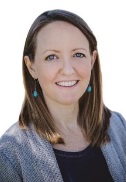
Dr Rice is currently an assistant professor at the Southwest College of Naturopathic Medicine, teaching the didactic homeopathy courses, and adjunct faculty at Phoenix College. Additionally, she has a family medicine private practice specializing in the homeopathic treatment of depression and anxiety.
ABOUT Stephen Messer
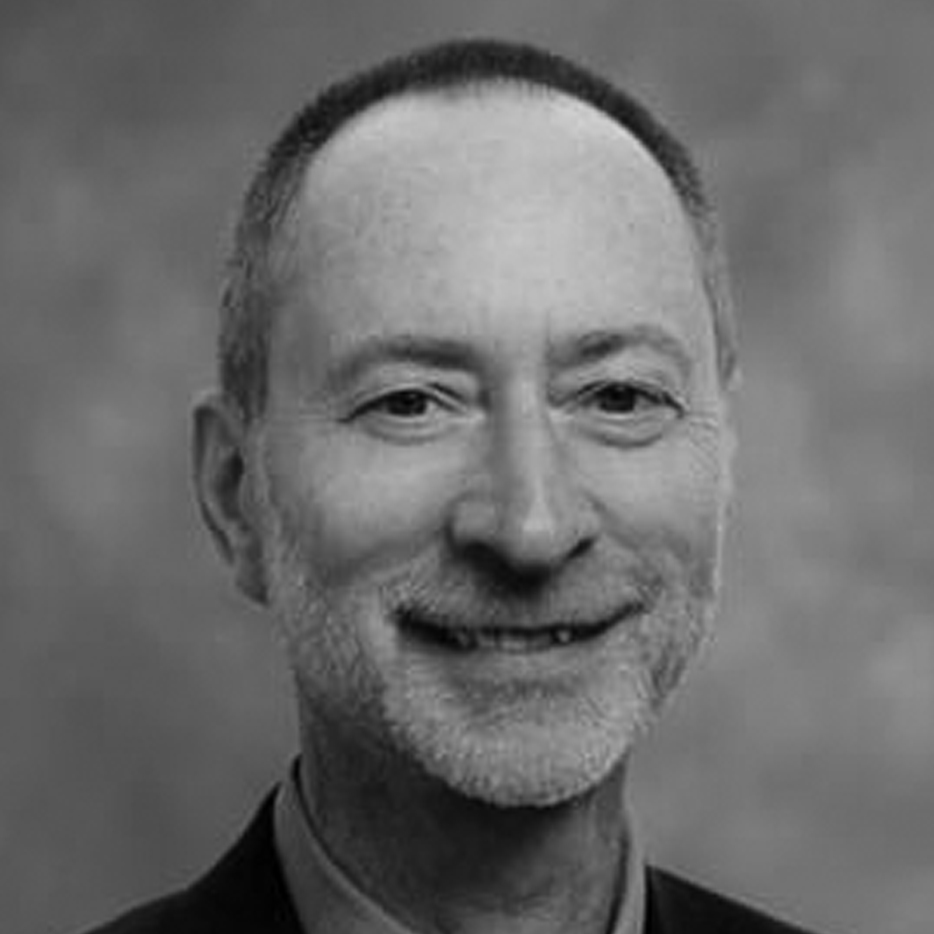
Dr. Messer is a founder and past president of the Homeopathic Academy of Naturopathic Physicians. He served on the board of directors of the National Center for Homeopathy from 1987 to 2008 and has served on the boards of several homeopathic and naturopathic organizations, including the American Association of Naturopathic Physicians. He is a member of the Homeopathic Academy of Naturopathic Physicians, National Center for Homeopathy, and Arizona Naturopathic Medical Association.
Dr. Messer’s began teaching in 1984 with the International Foundation for Homeopathy. In 1993, he became the dean of the National Center for Homeopathy’s prestigious summer school. He instructed in homeopathy at National College of Natural Medicine and in 2000, after 21 years of successful practice in Oregon, he relocated to Arizona and to Southwest College of Naturopathic Medicine as professor and Dolisos Chair of Homeopathic Medicine.
PRAISE FOR Andre Saine,Gregory Pais,George Dimitriadis,Jamie Oskin
André’s seminars are so interesting and fulfilling in so many unknown areas for me.
— V.B.
Thank you so much for this brilliant webinar ( Niendorf 2022) ! I'm just electrified with this information and I'm eager to learn more.
— K.N.
Excellent presentations of cases, case taking and analysis.
— N.H.
I took the vaccine webinar and it was intelligently researched and presented ... vintage Dr. Saine for sure! I am letting many people know about this research and can't emphasize enough the importance of this presentation. Many many thanks for the hours of work and effort that went into the presentation.
— B.B.
Great webinar! Really good examination of cases. Thank you so much.
— MM
That was an invaluable class for me today, Gregory! I’m so happy I was able to attend 'live' this time. Thank you so very much!
— Carolyn
*I really liked this course because it was very focused. I liked the reviews at the beginning of each segment, the ability to ask questions, the 2 hour length of time vs. a one hour webinar. Going through cases is always really helpful. I seem to have a lot of sensitive patients, and when I was doing my homoeopathic training with Dr. Pitcairn, we didn’t get to the LM/Q potencies in depth due to time constraints, and I’m really enjoying starting to use these and hoping for gentler responses.
— LC
George Dimitriadis is one of a handful of individuals in the world today who possess an in-depth knowledge of classical Hahnemannian homœopathy. He is a scholar and an excellent prescriber. I have known him personally, and have followed his efforts to establish Hahnemannian homœopathy in Australia. His thorough, scientific approach does great service to classical homœopathy in general, and adds prestige to the profession. We are proud to have him in our ranks as a superb, scientific defender of the cause of pure homœopathy.
— George Vithoulkas
Having had the privilege of discussing Bönninghausen's Therapeutic Pocketbook [TBR2] with George, I can only say that I am thoroughly impressed with the level of real scholarship I see. I value any opportunity to learn from this gifted teacher and researcher. His eye for detail and thoroughness are impressive. His writing style and extensive footnotes offer the reader clarity and simplicity with the option of depth and further elaboration. Wow. I am a total fan. Just get anything he does.
— Joe Kellerstein, ND
I am personally grateful to George Dimitriadis because I was inspired to study Bönninghausen's Therapeutic Pocketbook in-depth after seeing him speak at the 2013 JAHC convention in Reston, Virginia. Although I was trained primarily in post-Kentian repertorisation, I have now been utilizing George Dimitriadis' English translation of Bönninghausen's Therapeutic Pocketbook [TBR2] almost exclusively for the past year and have seen significant improvements in the accuracy of homœopathic prescriptions and clinical results. Dimitriadis' tireless efforts with over 15 years of work to edit Bönninghausen's Therapeutic Pocketbook have made TBR2 the most accurate and reliable repertory available on the market today. The history of the Pocketbook and instructions for its use in the prologues are invaluable. TBR2 is also the only repertory with an extensive exegesis explaining the meanings of rubrics with reference to the primary provings. Dimitriadis' work is meticulous and evidences that he is one of the greatest scholars of pure Hahnemannian homœopathy today. I also highly recommend Dimitriadis' companion book Homœopathic Diagnosis, Hahnemann through Bönninghausen. This book gives a more extensive history and theory background of the Pocketbook as well as about 50 case examples for students to practice to learn the method of using TBR2 to efficiently and effectively reference the materia medica, resulting in highly accurate homœopathic prescriptions. I recommend that beginners in homœopathy start with TBR2 and Homœopathic Diagnosis to have a solid foundation in the roots of homœopathy. Additionally, I recommend these works for more advanced homœopaths because the detailed endnotes are an invaluable treasure chest of knowledge.
— Jamie Oskin, ND
Dr. Oskin was clear, well organized, thorough and scholarly! A terrific presentation.
— Student
Specific case histories were most helpful.
— Student
It's always fun to be challenged with cases, then to be given the remedy and results.
— Student
Excellent!!!
— Student
Solid, factual, evidence-based, referenced information (i.e. not "speculative" opinions).
— Student
PURCHASE THE COURSE
REGISTRATION INFORMATION
Refund Policy: No refunds issued for WHN courses
If you are having technical issues with PayPal and need help enrolling,
please contact the Course Coordinator at: whnclasses@whnow.com,
888-722-5423 (Pacific time).
Your registration includes:
- A multimedia presentation with simultaneous computer and audio conferencing.
- Optional online discussion forum with other course participants.
- Online review and self-assessment quiz for each session.
- Documentation of 30 Homœopathic Education Hours.
- Access to our WHN Course website.
- High-quality PowerPoint presentations.
- Case assignments and repertorizations may be posted at the discretion of the instructor.
Discs WILL NOT be produced for this course.
Each session has been pre-recorded, and may be viewed at your convenience.
*To receive Verification of Attendance: You must watch the recorded sessions, and complete all quizzes with a score of 80% or better. Please be sure to print and safeguard your letter at the conclusion of the course.
For More Information - or to register offline:
Email whnclasses@whnow.com
or call 888-722-5423 (pacific time)
